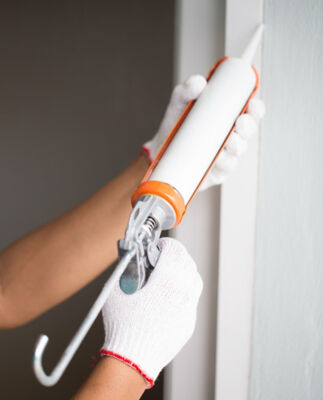Home Caulking Saves Energy and Looks Good

By Betty Hall, Energy Information Specialist
There are always plenty of projects to do around the house. Maybe it’s the cracking caulking or discolored caulking around the tub, the new trim, or where the sheet rock tape cracked during the earthquake 17 months ago.
Caulking is a low-cost project and something many people can do themselves to improve the look and energy efficiency of their home.
The first thing is to choose the right caulking for the job at hand. There are several different types of caulking for specific jobs. Some may be cleaned up with water, others require solvent so it’s wise to research the best type for your specific project.
It only takes one experience with the wrong caulking to know you’ve made a huge mistake. For example, using non-paintable white caulking next to a red wall. Now painting over a less-than-perfect caulking project isn’t possible.
A quick online search of caulking tips for a specific job (i.e. caulking a bathtub, a window, trim, etc) will provide helpful links, photos, and YouTube videos. One tip seen frequently is to use a “dripless” caulking gun — cut the tip on a slant, being careful not to make the hole too big or too small.
Caulking is also one of those projects that isn’t quite as easy as it looks. If you’ve ever watched a pro apply caulking it looks fast, easy, and perfect. The old saying “practice makes perfect” was never truer than when it comes to applying caulking.
The U.S. Department of Energy offers advice on selecting caulking, applying it, and tips for sealing air leaks around your home. Sealing air leaks can make your home more comfortable and help save money on those utility bills.
![Alaska Housing Finance Corporation [Logo]](/application/themes/ahf2/images/logo.png?v=2)